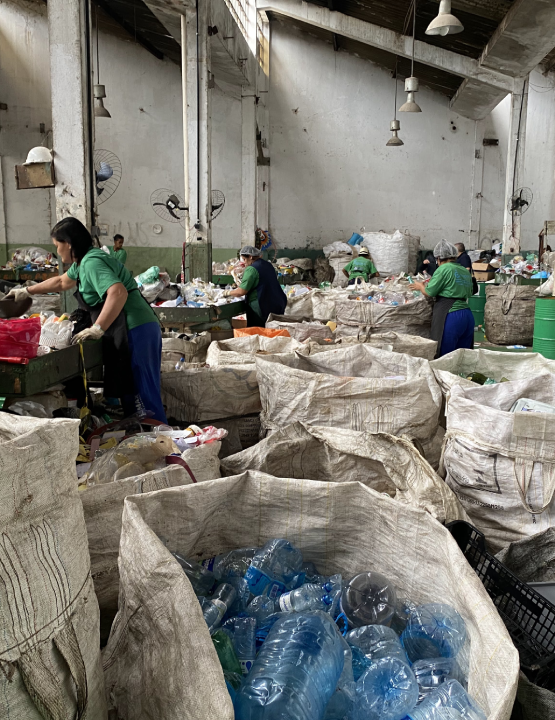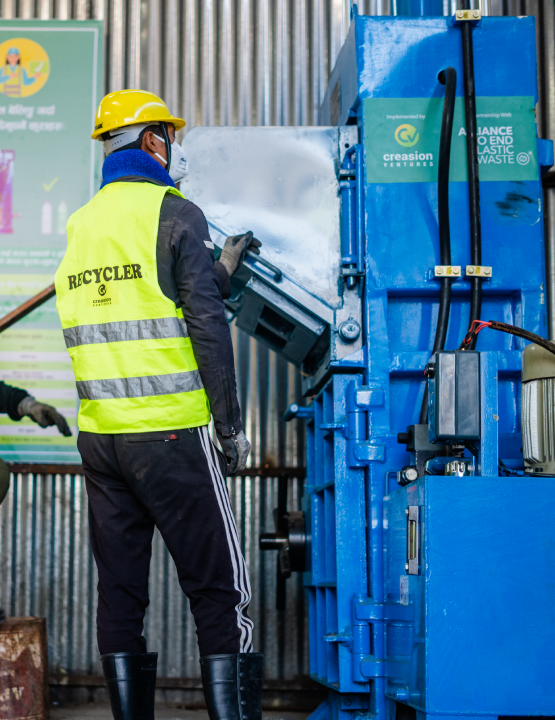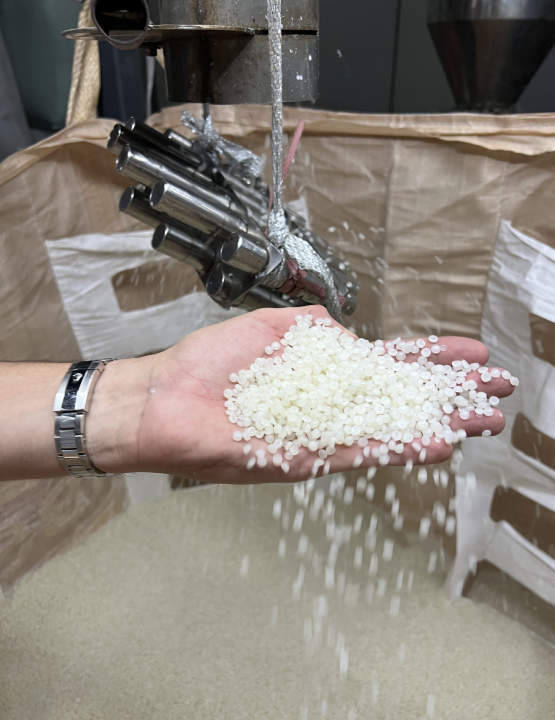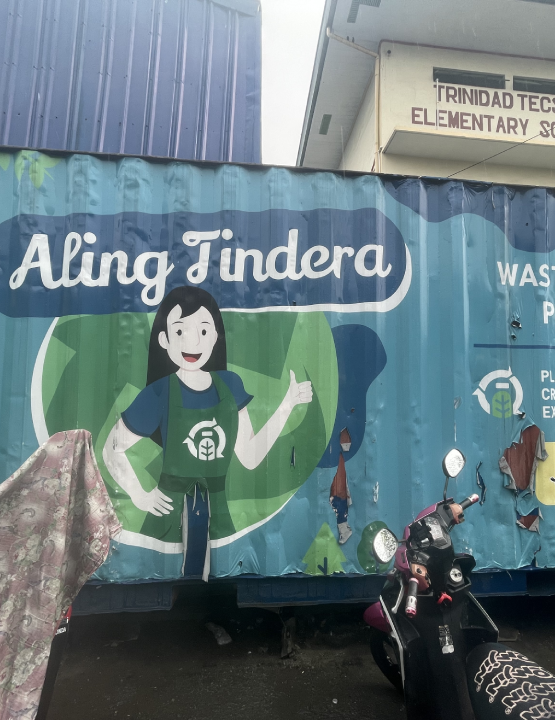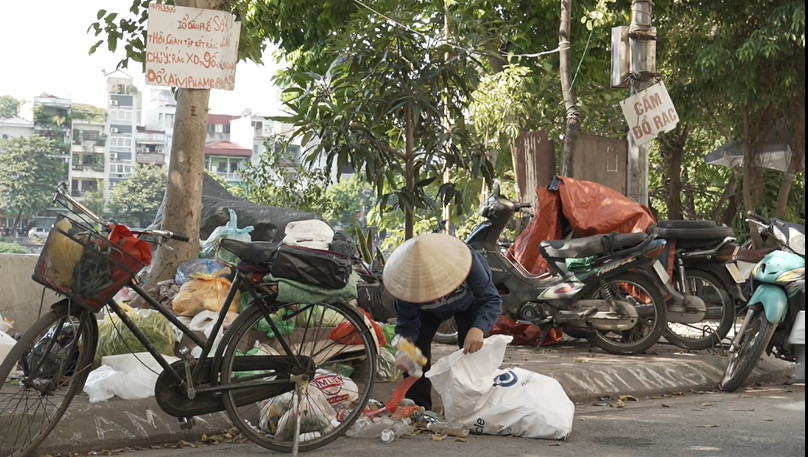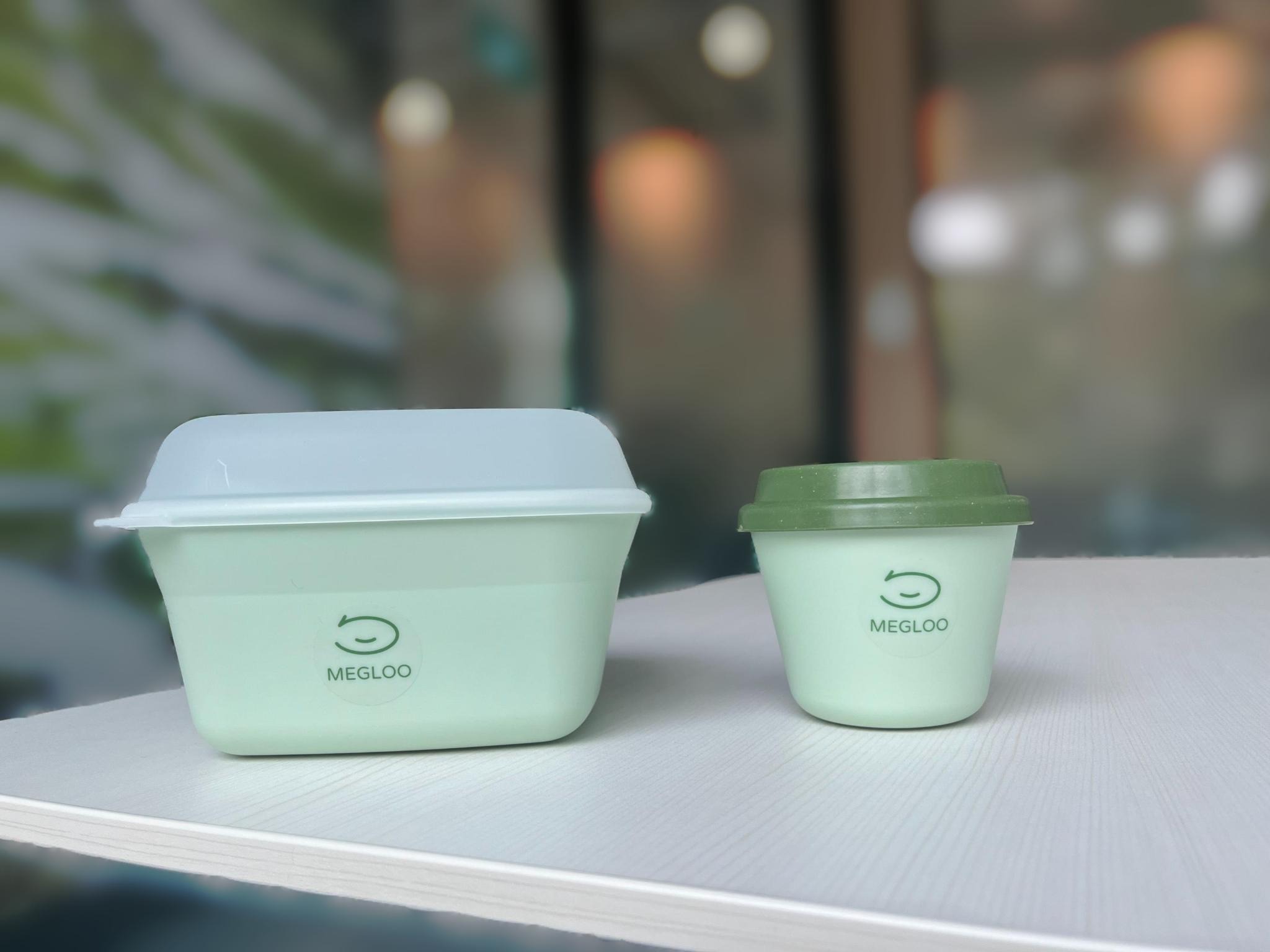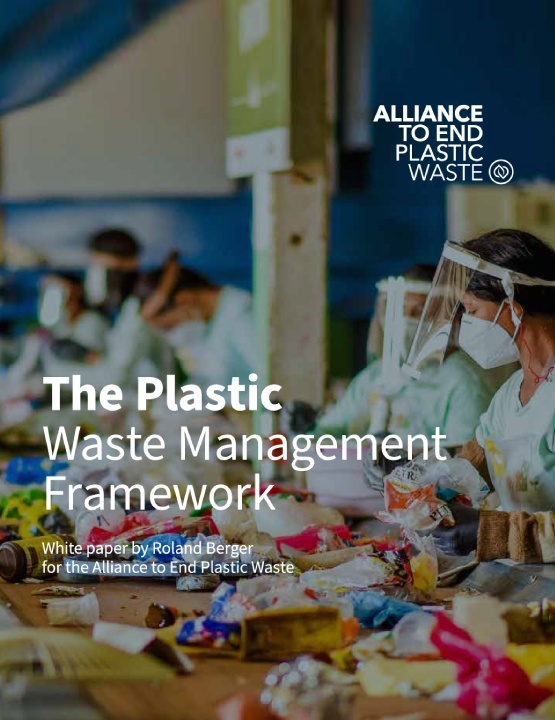Embracing circular economy practices is a complex challenge for industries that needs to involve the entire value chain of a product. Fortunately, a range of technological solutions are available to offer solutions.

These 7 innovations are making circularity quicker and easier

Overview
They say necessity is the mother of invention; and the plastic waste problem needs to be solved. Globally, over 70% of plastic packaging is not recovered because it is either landfilled, mismanaged, or uncollected. That translates to up to US$120 billion lost to the economy after a short first use.
That’s why we believe in supporting innovation—because the next great idea to help end plastic waste could be around the corner. That includes accelerating high-tech solutions, as well as encouraging new ways of looking at existing problems. By bringing together all sectors of society—individuals and organisations, public and private sector, the thinkers and doers—we can help solve the plastic waste challenge through collaboration.
Here are some of the innovators we are working with to help scale their ideas and replicate them around the world.
Robot sorting
Sorting waste is a dirty, repetitive, and sometimes dangerous job. Workers searching for recyclable material in piles of waste must search through broken glass, used hypodermic needles, and diapers—and the bad conditions are not offset by high levels of pay. Companies such as AMP, based in Colorado, USA, are putting robots on the job instead. AMP’s spider-shaped robot uses computer vision to sort recyclable newspaper, cardboard, and plastics by recognising objects based on shape, size, texture, colour, and even logo as they pass by on a conveyor belt. A major challenge for the circular economy in plastics is increasing the amount of plastic recycled, and this robot could be part of the solution. The machines are faster and more accurate than humans and aren’t at risk of injury. The human workers, meanwhile, are freed-up for more rewarding tasks.
Filtering rivers
Every year, eight billion kilos of plastic waste are dumped in the sea—80 percent of which come from land and are washed out to sea by rivers and canals. A Dutch project, the Bubble Barrier, aims to stop that by filtering plastic waste from rivers before it reaches the sea. A tube on the riverbed pumps air upwards, creating a flow of bubbles that pushes waste to the surface and guides it into a riverside catchment system. The bubbles, which don’t affect fish or ships, have been tested for a year in Amsterdam, successfully filtering plastic waste including a surfboard, sleeping bag, and several scooter helmets. The caught plastic could be a valuable source of material for circular businesses wanting to make new products.
Tracking plastics
Another project designed to prevent plastic waste reaching the ocean is Circulor, a UK-based company that provides ‘traceability-as-a-service’. The company developed expertise in tracing commodities that do not have a unique form while working with industrial supply chains and now plans to expand into plastic recycling. Circulor creates a ‘digital twin’ of elements in the supply chain and then tracks them throughout their life cycle, using a range of technology, from smartphone apps to facial recognition software. An improved chain of custody for manufactured and recyclable materials helps to ensure that they enter and exit the recycling process more effectively. This allows companies to demonstrate adherence to UN Sustainable Development Goals.
Rethink recycling
Around 80 percent of plastic waste goes to landfills and has no chance to be used again. Plastic Back aims to change that with a new method of recycling. Using chemical oxidation to create free radicals—unstable atoms or molecules to attack the plastic polymer, breaking it down to its original form. The Israeli firm can recycle all plastic types and the process works at room temperature and requires less space than existing treatment plants, making it easier for companies to make products fit for use from a pre-loved source.
New materials
Another option is to recycle plastic waste to create new materials. That’s what Arqlite is doing. The company has developed a recycling process that can be used on any kind of plastic and creates the first commodity ever made entirely from mixed plastic waste. The Arqlite Smart Gravel can be used in drainage systems, precast concrete and light concrete. It is a solution that helps to tackle plastic waste while also reducing the carbon footprint of the construction sector.
Recycling insights
Waste can only be recycled and put back into the circular economy once it is collected—and Litterati is hoping to make that easier using smartphone apps and data analytics. Users of the app photograph litter when they collect it and the app uses machine learning to analyse the type of waste in the picture. The data gathered is then leveraged to derive actionable insights. The company’s data has already been used to change waste policy on small PET bottles in the Netherlands. Plus, by identifying cigarette litter, Litterati has also helped the city of San Francisco generate $4m in annual tax revenue.
Waste analytics
Finally, Greyparrot is using computer vision and machine learning not only to sort plastic waste, but also to detect impurities and reduce the amount of plastic going to landfills. Measuring the purity of recycled material more quickly and accurately increases the amount of recycled plastic that is reused. The company provides software for a range of hardware and is providing analytics tools to help waste managers build a picture of the flow of material.

